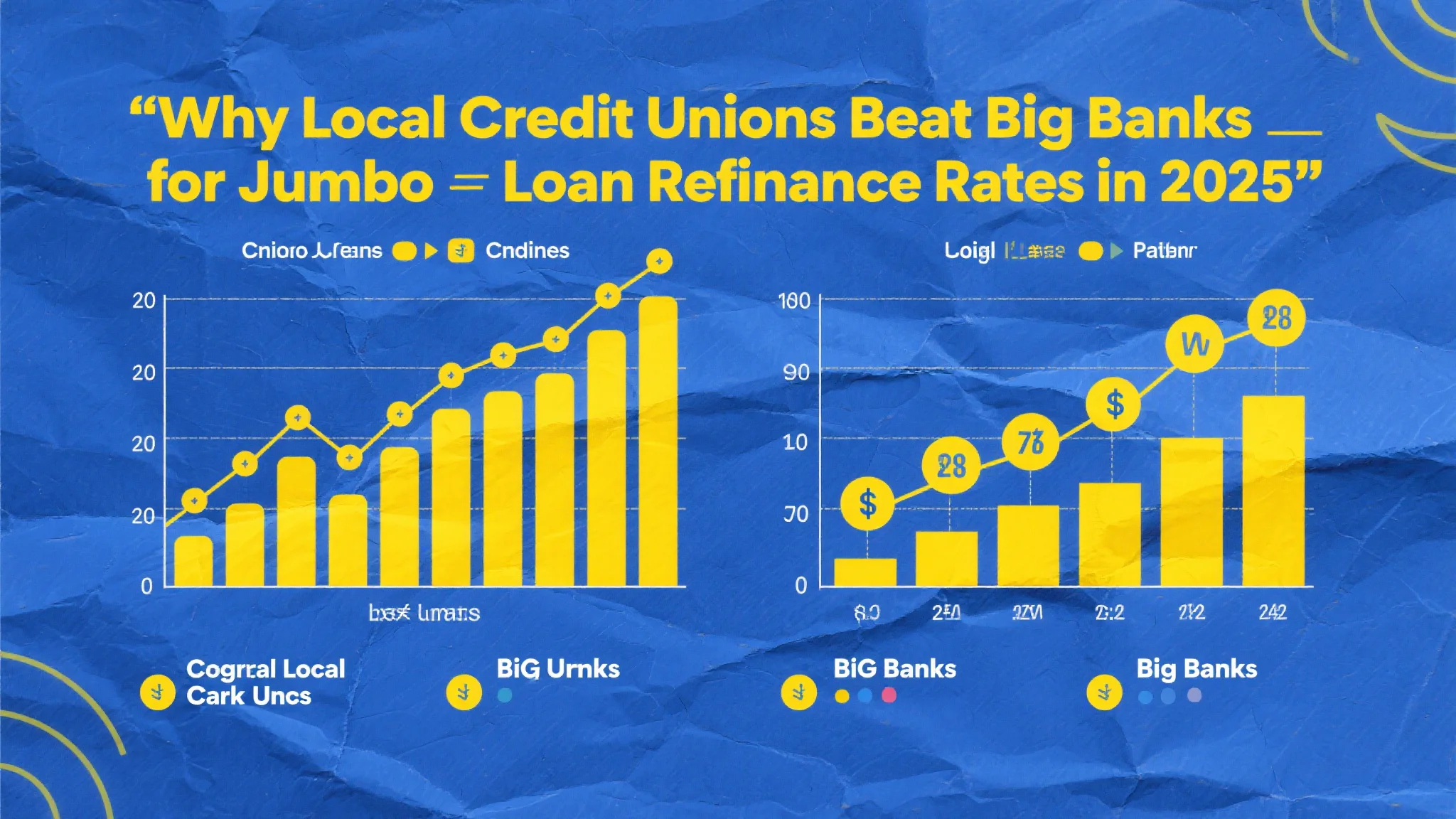Negotiating with lenders for better refinance rates requires strategic preparation, compelling arguments, and effective communication skills. Many homeowners accept the first rate quote they receive, missing opportunities to save thousands of dollars over the life of their loan. Understanding the negotiation process, preparing the right documentation, and using proven scripts can significantly improve your chances of securing lower mortgage refinance rates. The key lies in approaching negotiations as an informed consumer who understands market conditions, has multiple options, and can present a compelling case for preferential pricing.
Preparation Strategies and Market Research for Effective Rate Negotiations
Successful rate negotiations begin long before you contact your first lender. The foundation of effective negotiation lies in thorough preparation, comprehensive market research, and understanding your position as a borrower. When you negotiate refinance rate terms, lenders evaluate your request based on risk assessment, competitive pressure, and profit margins. Your preparation should address each of these factors systematically.
Start by obtaining your credit reports from all three major bureaus and reviewing them meticulously for errors or outdated information. Even small improvements to your credit score can translate into significant rate reductions. If you discover inaccuracies, dispute them immediately and wait for resolution before beginning negotiations. A credit score improvement of just 20 points can often result in rate reductions of 0.125% to 0.25%, which translates to substantial savings over the loan term.
Gather comprehensive financial documentation that demonstrates your creditworthiness and stability. This includes recent pay stubs, tax returns, bank statements, investment account statements, and documentation of any additional income sources. Organize these documents professionally and ensure they paint a complete picture of your financial strength. Lenders are more likely to offer competitive rates to borrowers who appear organized, stable, and low-risk.
Research current market rates extensively using multiple sources including online rate aggregators, direct lender websites, and mortgage broker platforms. Document the rates you find, noting the specific terms, points, and fees associated with each offer. This research serves as ammunition for your negotiations and helps you understand what rates are realistically achievable for borrowers with your profile.
Understand the different types of lenders and their typical pricing strategies. Credit unions often offer competitive rates to members but may have limited product options. Online lenders frequently provide aggressive pricing but may lack personalized service. Traditional banks offer comprehensive services but may not always have the most competitive rates. Community banks often provide personalized attention and may be more flexible in their pricing for local customers.
Calculate your loan-to-value ratio accurately using recent property valuations or comparative market analyses. A lower LTV ratio strengthens your negotiating position significantly. If your home has appreciated substantially since your original purchase or last refinance, this equity position can be leveraged for better rates. Consider obtaining a professional appraisal if you believe your home’s value has increased significantly.
Analyze your current mortgage terms thoroughly, including your existing rate, remaining balance, monthly payment, and any prepayment penalties. Understanding these details helps you articulate the specific benefits you’re seeking and demonstrates your sophistication as a borrower. Calculate potential savings from various rate reductions to understand what concessions are worth pursuing aggressively.
Research the specific lenders you plan to contact, including their recent rate trends, customer reviews, and reputation in the market. Understanding a lender’s competitive position and recent business performance can provide insights into their willingness to negotiate. Lenders facing increased competition or seeking to grow market share may be more flexible in their pricing.
Prepare a compelling borrower profile that highlights your strengths and addresses any potential concerns. This narrative should emphasize your payment history, employment stability, debt management, and any factors that make you an attractive borrower. Consider creating a one-page summary that you can reference during phone conversations or include with written applications.
Timing your negotiations strategically can improve your success rate. End-of-quarter and end-of-year periods often see increased lender flexibility as loan officers work to meet production goals. Additionally, monitoring economic indicators and Federal Reserve announcements can help you time your negotiations to coincide with favorable market conditions.
Establish relationships with multiple lenders simultaneously to create competitive pressure. Having multiple applications in process gives you leverage and alternatives if one lender proves inflexible. However, be mindful of the impact of multiple credit inquiries and try to complete all applications within a short timeframe to minimize credit score impact.
Understand the various fees and costs associated with refinancing beyond just the interest rate. Points, origination fees, appraisal costs, title insurance, and other closing costs can significantly impact the overall value of a refinance offer. Prepare to negotiate these elements in addition to the interest rate, as lenders often have more flexibility with fees than with rates.

Proven Negotiation Scripts and Communication Techniques
Effective lender negotiation scripts combine professional communication with strategic pressure points that motivate lenders to offer their best terms. The language you use, the timing of your requests, and the way you present information can significantly influence the outcome of your negotiations. Successful scripts acknowledge the lender’s business needs while clearly articulating your value as a borrower and your expectations for competitive treatment.
Begin every conversation with a professional introduction that establishes your credibility and serious intent. “Good morning, I’m calling to discuss refinancing my mortgage. I’m a qualified borrower with excellent credit, stable employment, and significant equity in my home. I’m currently evaluating offers from several lenders and would like to understand what competitive rates you can provide.” This opening immediately signals that you’re an informed consumer with alternatives.
When discussing your current situation, emphasize stability and strength. “I’ve been with my current employer for [X years] and have never missed a mortgage payment. My credit score is [specific number], and I have [X%] equity in my home based on recent comparable sales in my neighborhood.” Specific numbers and concrete facts carry more weight than general statements about your creditworthiness.
Present competitive offers strategically without revealing all your information immediately. “I’ve received a preliminary quote of [X%] from another lender, but I prefer to work with an institution that values long-term relationships. What rate can you offer for a borrower with my profile?” This approach creates competitive pressure while leaving room for the lender to improve their initial offer.
When you receive an initial rate quote, avoid accepting it immediately even if it seems competitive. “That’s a reasonable starting point, but I was hoping for something more competitive given my strong credit profile and the current market conditions. Is there any flexibility in that rate?” This response signals that you expect better terms and opens the door for negotiation.
Use specific market data to support your requests. “I’ve seen rates as low as [X%] for borrowers with similar profiles on [specific platform or with specific lender]. Given my excellent payment history and low debt-to-income ratio, I believe I should qualify for your most competitive pricing. Can you match or improve on that rate?” Concrete market references make your requests more credible and harder to dismiss.
Address potential objections proactively. “I understand that rates vary based on individual circumstances, but I’ve done my research and believe my profile warrants your best pricing. I’m prepared to move quickly if we can agree on competitive terms, and I’m looking for a long-term lending relationship, not just a one-time transaction.” This approach acknowledges the lender’s perspective while reinforcing your value proposition.
When negotiating fees in addition to rates, bundle your requests strategically. “While the rate is important, I’m also looking at the total cost of the transaction. Can you waive the origination fee or reduce the points requirement? I’m comparing total costs across multiple lenders, not just interest rates.” This approach encourages lenders to compete on overall value rather than just the headline rate.
Create urgency without appearing desperate. “I’m planning to make a decision by [specific date] and would like to include your best offer in my final comparison. Is there any additional flexibility you can provide to earn my business?” Time pressure can motivate lenders to offer their most competitive terms, but the deadline should be reasonable and genuine.
When speaking with loan officers, acknowledge their role and expertise. “I appreciate your time and expertise in helping me understand my options. I’m sure you work with many qualified borrowers, and I’m hoping you can help me secure the competitive pricing that my profile warrants.” Building rapport with loan officers can lead to more favorable treatment and additional effort on your behalf.
If initial negotiations aren’t successful, escalate appropriately. “I understand you may have limited flexibility, but this is an important financial decision for me. Is there a supervisor or manager who might be able to review my file and consider additional options?” Escalation should be professional and respectful, not confrontational.
When you receive improved offers, use them to create additional leverage. “I appreciate the improved rate, and it’s definitely competitive. I have one other lender who’s offered [slightly better terms]. If you can match or improve on that offer, I’d prefer to move forward with you based on our conversation and your reputation.” This approach gives the lender a specific target while expressing preference for working with them.
Close negotiations decisively when you receive acceptable terms. “That rate and fee structure work well for me. I’m ready to move forward immediately. What do you need from me to lock in these terms and begin the application process?” Prompt acceptance of good offers prevents lenders from reconsidering their concessions and demonstrates your serious intent to proceed.
Advanced Negotiation Tactics and Long-term Relationship Building
Mastering advanced negotiation techniques for lower mortgage refinance rates requires understanding the psychological and business factors that influence lender decision-making. Beyond basic rate negotiations, sophisticated borrowers leverage relationship-building, timing strategies, and comprehensive financial positioning to secure optimal terms. These advanced approaches often yield better results than simple rate shopping because they address the lender’s broader business objectives and risk management concerns.
Develop a comprehensive understanding of each lender’s business model and competitive position. Banks focused on portfolio lending may offer different flexibility than those that sell loans immediately to secondary markets. Credit unions operating under different regulatory frameworks may have unique pricing capabilities. Online lenders with lower overhead costs might compete aggressively on rates but have less flexibility on fees. Tailoring your approach to each lender’s specific business model increases your negotiation effectiveness.
Position yourself as a valuable long-term customer rather than a one-time transaction. “I’m looking for a financial institution where I can consolidate my banking relationships. In addition to the mortgage, I’m considering moving my checking, savings, and investment accounts. What additional benefits or rate improvements might be available for customers who bring multiple relationships?” This approach can unlock relationship pricing that isn’t available to single-product customers.
Leverage your existing relationships strategically. If you have accounts with a bank or credit union, emphasize your history and loyalty. “I’ve been a customer for [X years] and have always maintained my accounts in good standing. I’d prefer to keep my mortgage with an institution where I already have established relationships. What can you do to make that financially attractive for me?” Existing relationships often provide access to preferential pricing and more flexible underwriting.
Use professional advisors to enhance your credibility and negotiating position. “My financial advisor has recommended that I refinance to optimize my overall financial strategy. They’ve suggested that borrowers with my profile should be able to secure rates in the [X%] range. Can you help me achieve that target?” Professional endorsements can carry significant weight with lenders and demonstrate your sophisticated approach to financial management.
Negotiate beyond traditional rate and fee structures. Consider requesting rate locks for extended periods, expedited processing, or flexible payment options. “Given the current market volatility, I’d like to lock this rate for 60 days rather than the standard 30. Is that possible, and would it affect the pricing?” These additional terms can provide significant value even if the base rate isn’t negotiable.
Present alternative scenarios that might be more attractive to the lender. “If the rate for a 30-year loan isn’t flexible, what about a 15-year term? I’m also considering a larger down payment if that would improve the pricing.” Offering alternatives gives lenders multiple ways to compete for your business and may reveal pricing options you hadn’t considered.
Understand and leverage seasonal and cyclical factors in the mortgage industry. Lenders often have quarterly production goals, and loan officers may have monthly targets that influence their flexibility. “I understand it’s near the end of your quarter. If there’s additional flexibility available to help you meet your goals, I’m prepared to move quickly to close this month.” Timing your negotiations to align with lender incentives can improve your results.
Document all negotiations and agreements carefully. “I want to make sure I understand the terms correctly. You’re offering [specific rate] with [specific fees] and [specific conditions]. Can you email me a summary of these terms so I can review them with my spouse?” Written documentation prevents misunderstandings and provides leverage if terms change during the application process.
Build relationships with multiple contacts at each institution. While loan officers are your primary contact, developing relationships with branch managers, underwriters, or other staff members can provide additional advocacy for your application. “I appreciate [loan officer’s name] helping me with this application. Is there anyone else on your team I should connect with to ensure a smooth process?” Multiple relationships provide backup support and additional perspectives on your application.
Consider the total relationship value you bring to the institution. “Beyond the mortgage, I’m also looking for a bank that can handle my business banking needs. My company maintains significant deposit balances and has ongoing credit needs. How might that broader relationship affect the pricing on my personal mortgage?” Commercial relationships often unlock additional pricing flexibility for personal loans.
Prepare for multiple rounds of negotiation. Initial offers are rarely final, and persistence often yields better results. “I appreciate the improved offer, and it’s definitely moving in the right direction. Given my strong profile and the competitive market, is there any additional flexibility available?” Continued professional pressure often results in incremental improvements that add up to significant savings.
When you negotiate refinance rate terms successfully, maintain the relationship for future needs. “Thank you for working with me to achieve these competitive terms. I look forward to a long-term relationship and will certainly recommend your services to friends and colleagues.” Positive relationships with lenders can provide advantages for future transactions and referrals to other qualified borrowers.
Finally, be prepared to walk away if negotiations don’t yield acceptable results. “I appreciate your time and effort, but the terms don’t quite meet my needs. I’ll continue evaluating other options, but please let me know if anything changes that might make this work.” The willingness to walk away often motivates lenders to make final concessions, and it ensures you don’t accept suboptimal terms out of convenience or pressure.



